购物车
全部删除  您的购物车当前为空
您的购物车当前为空
别名 MEP, FLJ31037, CTSL1, CTSL, CATL, cathepsin L
Anti-CTSL Antibody (9O318) 是一种 Rabbit 抗体,靶向 CTSL。Anti-CTSL Antibody (9O318) 可用于 FCM,ICC/IF,IHC,WB。
Anti-CTSL Antibody (9O318) 是一种 Rabbit 抗体,靶向 CTSL。Anti-CTSL Antibody (9O318) 可用于 FCM,ICC/IF,IHC,WB。
| 规格 | 价格 | 库存 | 数量 |
|---|---|---|---|
| 50 μL | ¥ 1,480 | 5日内发货 | |
| 100 μL | ¥ 2,490 | 5日内发货 |
| 产品描述 | Anti-CTSL Antibody (9O318) is a Rabbit antibody targeting CTSL. Anti-CTSL Antibody (9O318) can be used in FCM,ICC/IF,IHC,WB. |
| 别名 | MEP, FLJ31037, CTSL1, CTSL, CATL, cathepsin L |
| Ig Type | IgG |
| 克隆号 | 9O318 |
| 交叉反应 | Human,Mouse,Rat |
| 验证活性 | 1. Western blot analysis of Cathepsin L/V/K/H on different cells lysates using anti-Cathepsin L/V/K/H antibody at 1/1,000 dilution. Positive control: Lane 1: HepG2, Lane 2: A549. 2. Immunohistochemical analysis of paraffin-embedded human kidney tissue using anti-Cathepsin L/V/K/H antibody. Counter stained with hematoxylin. 3. Immunohistochemical analysis of paraffin-embedded mouse kidney tissue using anti-Cathepsin L/V/K/H antibody. Counter stained with hematoxylin. 4. Immunohistochemical analysis of paraffin-embedded rat kidney tissue using anti-Cathepsin L/V/K/H antibody. Counter stained with hematoxylin. 5. ICC staining Cathepsin L/V/K/H in HepG2 cells (red). The nuclear counter stain is DAPI (blue). Cells were fixed in paraformaldehyde, permeabilised with 0.25% Triton X100/PBS. 6. Flow cytometric analysis of HepG2 cells with Cathepsin L/V/K/H antibody at 1/50 dilution (red) compared with an unlabelled control (cells without incubation with primary antibody; black). Alexa Fluor 488-conjugated goat anti rabbit IgG was used as the secondary antibody. 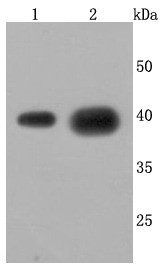  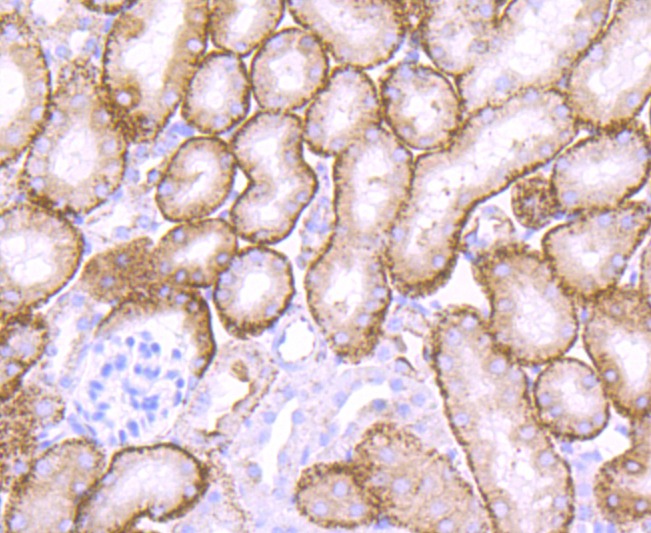 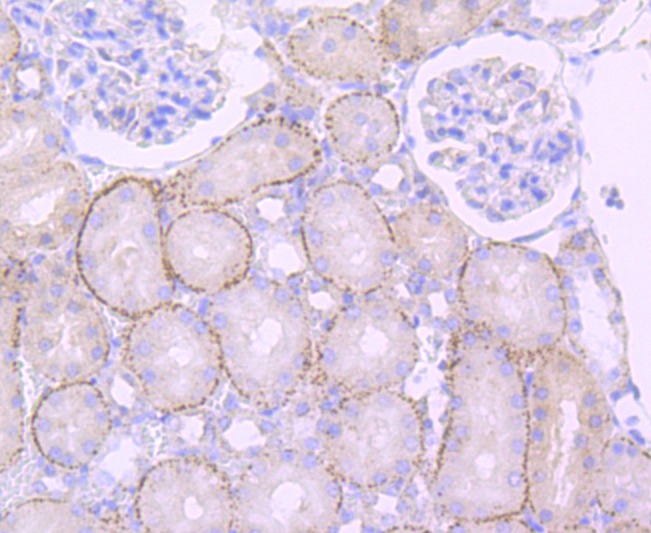 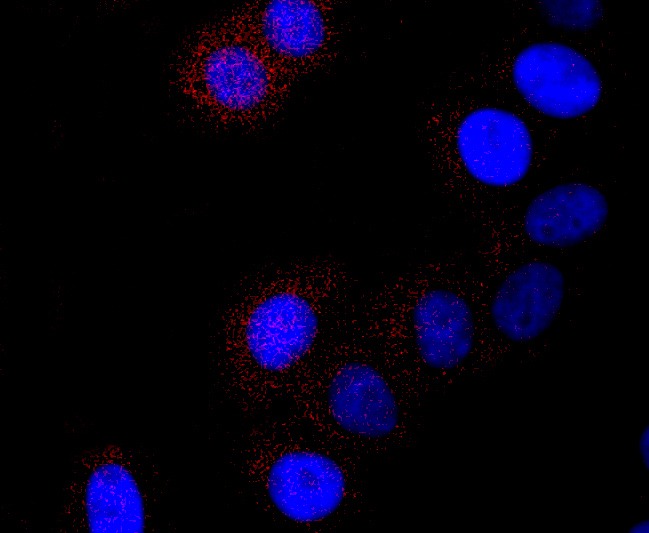 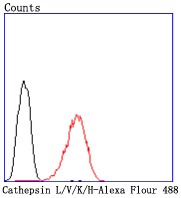 |
| 应用 | FCMICC/IFIHCWB |
| 推荐剂量 | WB: 1:1000-5000; IHC: 1:50-200; ICC/IF: 1:50-100; FCM: 1:50-100 |
| 抗体种类 | Monoclonal |
| 宿主来源 | Rabbit |
| 构建方式 | Recombinant Antibody |
| 纯化方式 | ProA affinity purified |
| 性状 | Liquid |
| 缓冲液 | 1*TBS (pH7.4), 1%BSA, 40%Glycerol. Preservative: 0.05% Sodium Azide. |
| 研究背景 | The cathepsin family of proteolytic enzymes contains several diverse classes of proteases. The cysteine protease class comprises cathepsins B, L, H, K, S, and O. The aspartyl protease class is composed of cathepsins D and E. Cathepsin G is in the serine protease class. Most cathepsins are lysosomal and each is involved in cellular metabolism, participating in various events such as peptide biosynthesis and protein degradation. Cathepsin L (also designated major excreted protein, MEP or CATL) is a member of the peptidase C1 family and has been identified as a protein that is most closely related to cathepsin H. It is a lysosomal cysteine proteinase that mediates intracellular protein catabolism for collagen, elastin and ?-1 protease inhibitor. Cathepsin L is a dimer composed of disulfide-linked heavy and light chains, both produced from a single protein precursor. At least two transcript variants encoding the same protein have been found for this gene. Transformed mouse fibroblasts stimulated by growth factors or tumor promoters secrete a form of cathepsin L. |
| 偶联 | Unconjugated |
| 免疫原 | Recombinant Protein |
| Uniprot ID |
| 分子量 | Theoretical: 38 kDa. |
| 储存方式 | Store at -20°C or -80°C for 12 months. Avoid repeated freeze-thaw cycles. |
| 运输方式 | Shipping with blue ice. |
评论内容